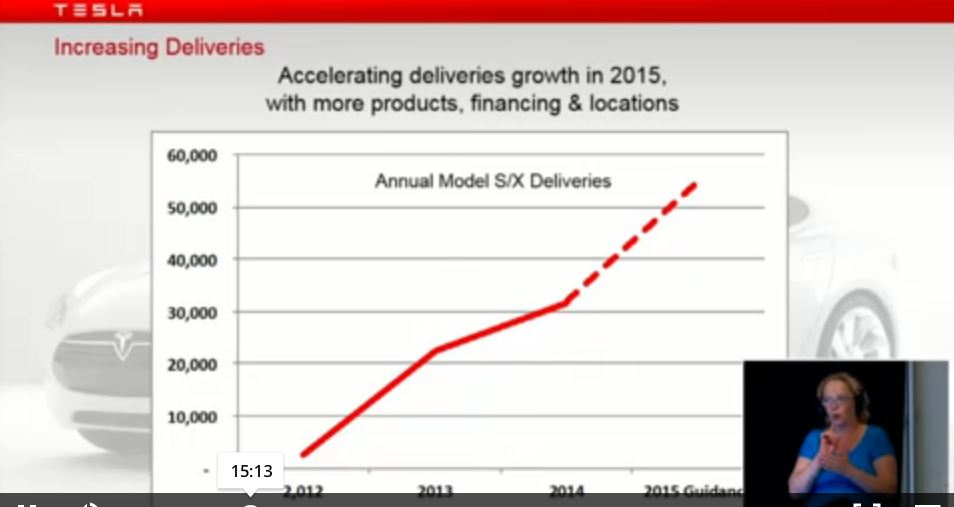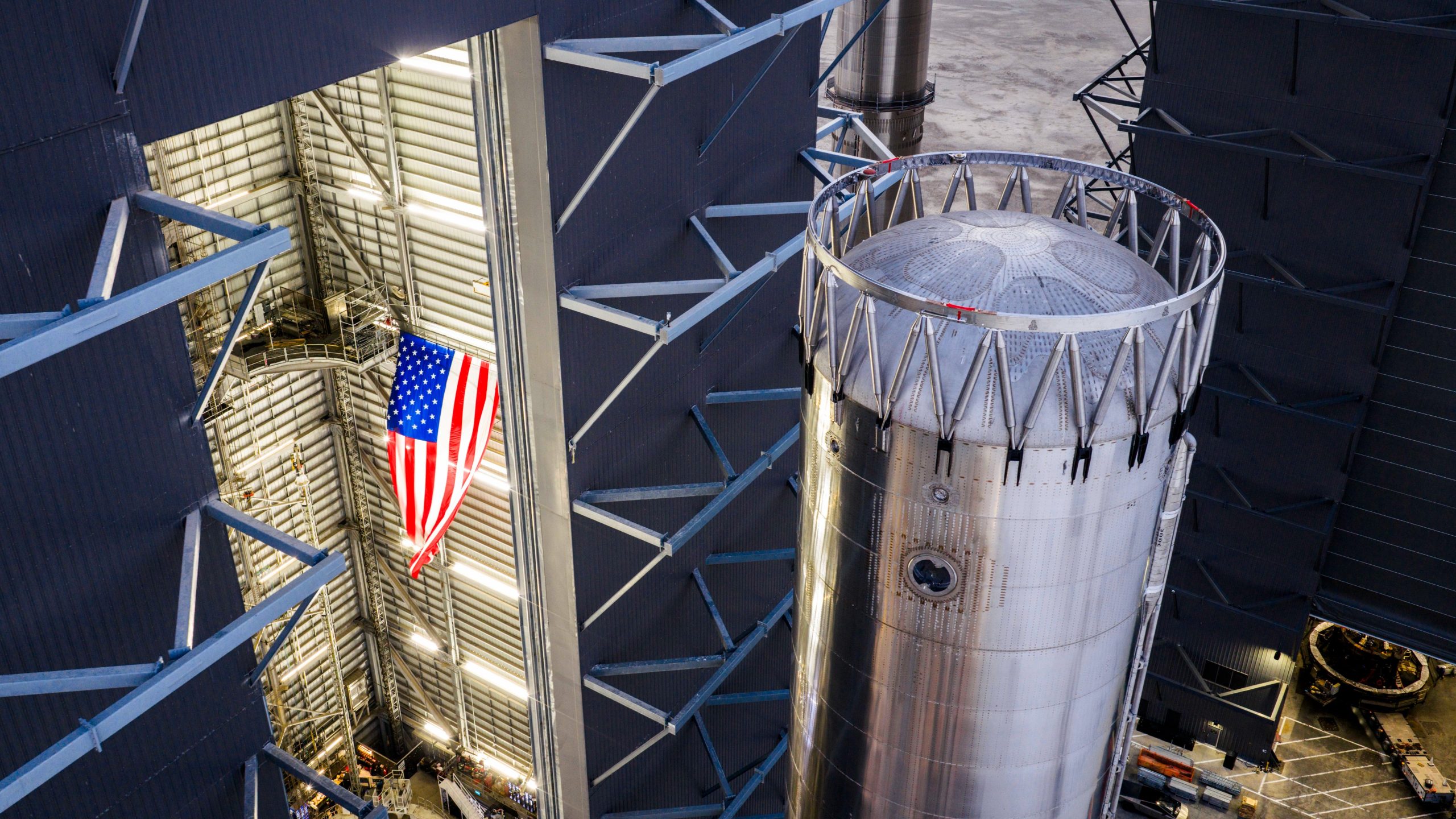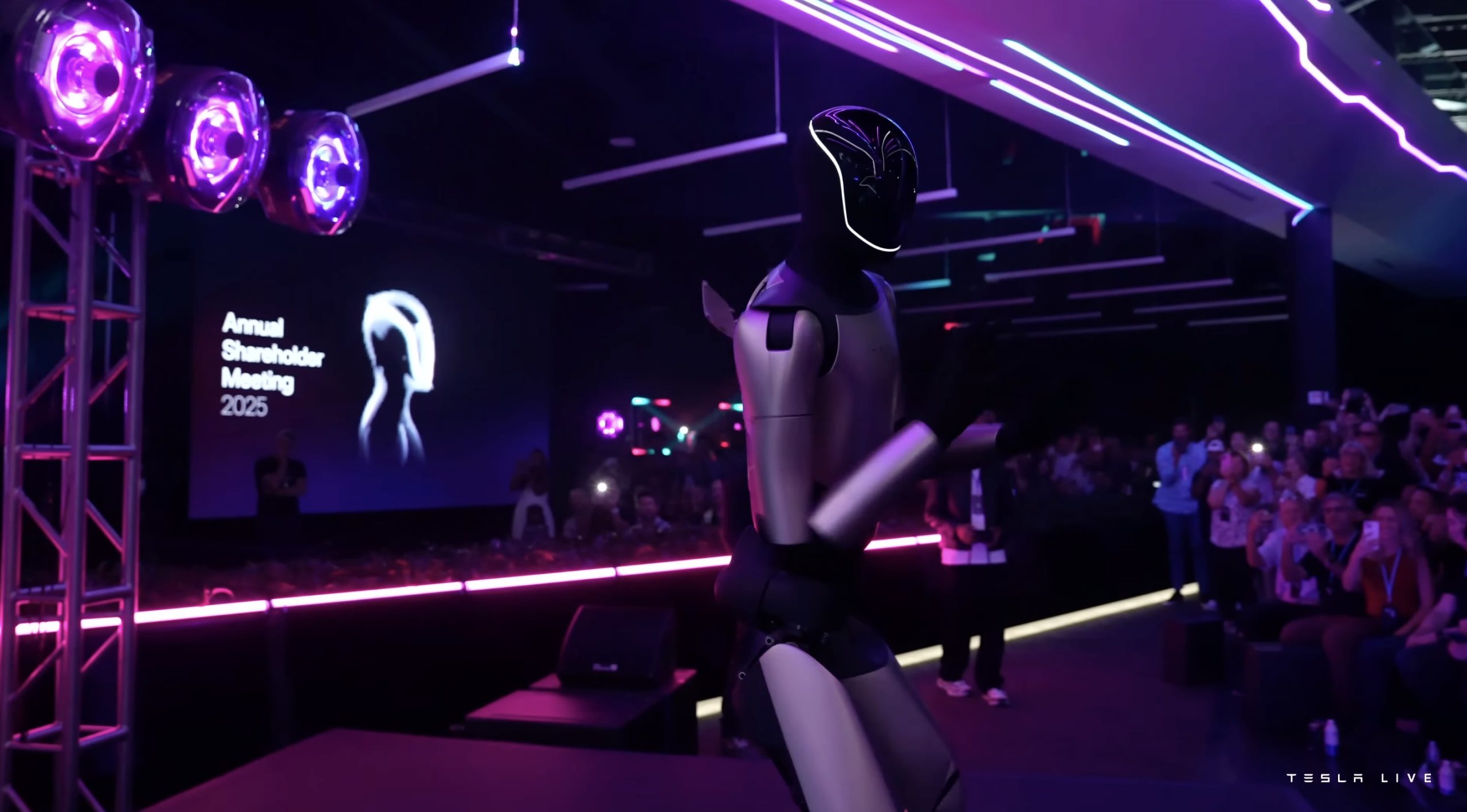News
Full Recap of Tesla’s 2015 Annual Shareholder Meeting
At the Tesla Annual Shareholder Meeting, chairman Elon Musk touched on a number of subjects, including cars, the GigaFactory, battery storage and space travel.

During his remarks at the Tesla annual shareholder meeting on Tuesday, chairman Elon Musk touched on a wide range of topics from the AutoPilot system, the GigaFactory, residential and utility scale grid storage, and life on Mars. Here’s a synopsis.
Car Stuff
Musk told the meeting that he anticipates sales volume will continue to grow 50% per year, on average, for the next several years. The company has opened a new casting and machining center near the Fremont factory. Moving production functions there has opened up room at the factory to install a new assembly line capable of producing 3 times as many cars as the current line. A new paint facility capable of handling up to 500,000 cars a year has also been installed.
The Model X is undergoing final pre-production tweaking and will start production in “3 to 4 months.” In response to a question, Musk said that mounting the battery pack low in the chassis makes the Model X one of the safest SUV’s on the road. He went on to say that, like the Model S, it will achieve some of the highest crash test ratings of any car on the road.
“[I]t’s turning out to be a really great car. I think the Model X may arguably be a better SUV than the Model S is as a sedan. We want to make sure obviously that some of the key features of the Model X, particularly the Falcon Wing door and the way the second row seats are done …is…just right, and provide true functionality and true value improvements versus just sort of feeling gimmicky. It’s got to be a genuine improvement in utility and aesthetics, so getting those final nuances right for the Model X is what we’re focused on right now.”
When asked about the affordable mass-market Model 3, he said it would be available only with a single motor at first to keep costs down but would be offered in a dual motor version as well.
He did have exciting news about the Supercharger network. The company is fitting solar panels to as many Supercharger locations as possible. He assured the audience that those that could not be converted to solar power would soon get their electricity only from renewable power sources.
Musk also said the company has created a new liquid cooled charging cord that is significantly thinner and more flexible than the one used now. Not only does liquid cooling make the cable more elegant, it will permit the use of higher powered Supercharger facilities in the future.
He emphasized that the system will continue to expand in North America and other countries to permit Tesla owners to enjoy free long distance driving for life. He did say that owners who use Superchargers for all their daily charging can expect to receive a “note” from the company.
With regard to the AutoPilot suite of autonomous driving features, Musk indicated that the company is busy testing and upgrading the system. “We’re making gradual progress towards what I’d say is a releasable bit of software. But it is quite a tricky thing and we want to make sure that our testing is exhaustive before we release the software. But if we keep making progress, I think we may be able to get it out to all the access customers which is sort of our public beta program around the end of this month.”
Full implementation is not expected for about 3 years, with a lot depending on how regulators in the US and abroad react to it. He said that the system at this point is intended to function like the auto pilot in airplanes — there to help but not to allow drivers to sleep through their journey to arrive alert and refreshed at their destination…..yet.
Musk admitted that interest in battery swapping was far lower than expected. He indicated that the company is focusing more on improving Supercharger performance and less on building battery swap locations.
Tesla PowerWall
One of the biggest announcements of the day concerns the Tesla PowerWall. Some critics have chirped that the units introduced to great fanfare in April were too small to be worth the cost. “I am very happy to announce that we’ve dramatically increased the power capability of the Powerwall. So it’s actually going to go from having 2 kilowatts steady, 3.3 kilowatt peak to a 7 kilowatt power, 5 kilowatt steady, price is unchanged. So, it basically more than doubled the power output of the Powerpack and the price is going to stay the same.”
The company will prioritize deliveries to people who already have a residential solar system or who are installing one. Why? Because an inverter will be already included in their system, meaning adding a PowerWall will cost only about $3,500 for the unit and about $500 for installation. That’s huge.
But even with that announcement, Musk admitted that the PowerWall may not make economic sense for most customers in the US because the differences between the cost of electricity during a 24 hour period are usually not large enough for there to be a pay back on the cost of the system in a reasonable period of time. He cites Germany, Australia and Hawaii as markets where the PowerWall makes more economic sense.
The company focus is on grid scale storage, which it expects will account for 80% of its stationary battery business. “That’s where the economics are very compelling because there is an important difference between price and cost. The cost to the utilities of between day and night is quite substantial because the power usage is often sort of 2:1 at least if not greater than 2:1, sometimes substantially greater than 2:1 between peak day usage and trough night usage.”
Musk told the audience that utility companies look favorably on using Tesla battery storage units because they are more compact than what competitors offer, so they can fit into the footprint of existing substations without the need to acquire more land and the permitting issues that may create. He says utilities are just like residential customers — they appreciate that the Tesla units are basically “plug and play” ready, with no hassles or headaches.
The GigaFactory
Musk said the GigaFactory was coming along smoothly, with production expected to begin next year with full capacity expected within 3 years. In response to a question from the audience, he responded, “Our focus right now is just making sure that we build the Gigafactory version one correctly and that’s going to be quite a difficult challenge over the next few years. We’ll have the first part of it active next year but then we want to try to get to full production in roughly three years…that’s going to be quite a challenge. And I think once we get to that point we want to figure out where to put Gigafactory Two and Three.”
He says the GigaFactory will have the capacity to build 50 gigawatt-hours of batteries a year. “And that should allow for 500,000 cars to be produced a year plus have 15 gigawatt-hours left over for stationary. The way it’s looking, demand for stationary is higher than expected, so we’re looking at potentially expanding the output capability of the Gigafactory to meet the higher demand for stationary.”
SpaceX
An audience member asked when SpaceX would be going public and Musk responded that a SpaceX IPO was a long way off, primarily because the stock market is focused on quarterly reports and has an attention span limited to 1 to 2 years maximum. He said the timeline for SpaceX was quite a bit beyond that. Then he dropped this bomb:
“I’m trying to build a city on Mars and that ends up sacrificing profitability for a really long time. I think it would be not super loved by the public markets. I’d expect with SpaceX that we will probably go public once we will have a regular flights to Mars.”
The Take Away
One stockholder asked Elon Musk what his goals for the company are. He gave this answer, which may serve as the overarching statement that underlies everything he and his various companies are attempting to accomplish.
“Our goal at Tesla is pretty straight forward; it’s really to accelerate the advent of sustainable energy and particularly sustainable transport. So in order for humanity to have a good future or for life…we have to figure out how to make that future sustainable, meaning not to have crazy amounts of CO2 in the atmosphere and ultimately get into situation of hydrocarbon scarcity, which would be economically disastrous.
“So, that’s what we’re focused on. Our primary goal is to accelerate the advent of sustainable transport and then, with the batteries, help the advent of sustainable energy production.”
Quoted material is courtesy of Seeking Alpha transcription service.

Elon Musk
SpaceX’s Starship program is already bouncing back from Booster 18 fiasco
Just over a week since Booster 18 met its untimely end, SpaceX is now busy stacking Booster 19, and at a very rapid pace, too.

SpaceX is already bouncing back from the fiasco that it experienced during Starship Booster 18’s initial tests earlier this month.
Just over a week since Booster 18 met its untimely end, SpaceX is now busy stacking Booster 19, and at a very rapid pace, too.
Starship V3 Booster 19 is rising
As per Starbase watchers on X, SpaceX rolled out the fourth aft section of Booster 19 to Starbase’s MegaBay this weekend, stacking it to reach 15 rings tall with just a few sections remaining. This marks the fastest booster assembly to date at four sections in five days. This is quite impressive, and it bodes well for SpaceX’s Starship V3 program, which is expected to be a notable step up from the V2 program, which was retired after a flawless Flight 11.
Starship watcher TankWatchers noted the tempo on X, stating, “During the night the A4 section of Booster 19 rolled out to the MegaBay. With 4 sections in just 5 days, this is shaping up to be the fastest booster stack ever.” Fellow Starbase watcher TestFlight echoed the same sentiments. “Booster 19 is now 15 rings tall, with 3 aft sections remaining!” the space enthusiast wrote.
Aggressive targets despite Booster 18 fiasco
SpaceX’s V3 program encountered a speed bump earlier this month when Booster 18, just one day after rolling out into the factory, experienced a major anomaly during gas system pressure testing at SpaceX’s Massey facility in Starbase, Texas. While no propellant was loaded, no engines were installed, and no one was injured in the incident, the unexpected end of Booster 18 sparked speculation that the Starship V3 program could face delays.
Despite the Booster 18 fiasco, however, SpaceX announced that “Starship’s twelfth flight test remains targeted for the first quarter of 2026.” Elon Musk shared a similar timeline on X earlier this year, with the CEO stating that “ V3 is a massive upgrade from the current V2 and should be through production and testing by end of year, with heavy flight activity next year.”
Considering that Booster 19 seems to be moving through its production phases quickly, perhaps SpaceX’s Q1 2026 target for Flight 12 might indeed be more than feasible.
News
Elon Musk makes a key Tesla Optimus detail official
“Since we are naming the singular, we will also name the plural, so Optimi it is,” Musk wrote on X.

Tesla CEO Elon Musk just made a key detail about Optimus official. In a post on X, the CEO clarified some key wording about Optimus, which should help the media and the public become more familiar with the humanoid robot.
Elon Musk makes Optimus’ plural term official
Elon Musk posted a number of Optimus-related posts on X this weekend. On Saturday, he stated that Optimus would be the Von Neumann probe, a machine that could eventually be capable of replicating itself. This capability, it seems, would be the key to Tesla achieving Elon Musk’s ambitious Optimus production targets.
Amidst the conversations about Optimus on X, a user of the social media platform asked the CEO what the plural term for the humanoid robot will be. As per Musk, Tesla will be setting the plural term for Optimus since the company also decided on the robot’s singular term. “Since we are naming the singular, we will also name the plural, so Optimi it is,” Musk wrote in his reply on X.
This makes it official. For media outlets such as Teslarati, numerous Optimus bots are now called Optimi. It rolls off the tongue pretty well, too.
Optimi will be a common sight worldwide
While Musk’s comment may seem pretty mundane to some, it is actually very important. Optimus is intended to be Tesla’s highest volume product, with the CEO estimating that the humanoid robot could eventually see annual production rates in the hundreds of millions, perhaps even more. Since Optimi will be a very common sight worldwide, it is good that people can now get used to terms describing the humanoid robot.
During the Tesla 2025 Annual Shareholder Meeting, Musk stated that the humanoid robot will see “the fastest production ramp of any product of any large complex manufactured product ever,” starting with a one-million-Optimi-per-year production line at the Fremont Factory. Giga Texas would get an even bigger Optimus production line, which should be capable of producing tens of millions of Optimi per year.
News
Tesla is improving Giga Berlin’s free “Giga Train” service for employees
With this initiative, Tesla aims to boost the number of Gigafactory Berlin employees commuting by rail while keeping the shuttle free for all riders.

Tesla will expand its factory shuttle service in Germany beginning January 4, adding direct rail trips from Berlin Ostbahnhof to Giga Berlin-Brandenburg in Grünheide.
With this initiative, Tesla aims to boost the number of Gigafactory Berlin employees commuting by rail while keeping the shuttle free for all riders.
New shuttle route
As noted in a report from rbb24, the updated service, which will start January 4, will run between the Berlin Ostbahnhof East Station and the Erkner Station at the Gigafactory Berlin complex. Tesla stated that the timetable mirrors shift changes for the facility’s employees, and similar to before, the service will be completely free. The train will offer six direct trips per day as well.
“The service includes six daily trips, which also cover our shift times. The trains will run between Berlin Ostbahnhof (with a stop at Ostkreuz) and Erkner station to the Gigafactory,” Tesla Germany stated.
Even with construction continuing at Fangschleuse and Köpenick stations, the company said the route has been optimized to maintain a predictable 35-minute travel time. The update follows earlier phases of Tesla’s “Giga Train” program, which initially connected Erkner to the factory grounds before expanding to Berlin-Lichtenberg.
Tesla pushes for majority rail commuting
Tesla began production at Grünheide in March 2022, and the factory’s workforce has since grown to around 11,500 employees, with an estimated 60% commuting from Berlin. The facility produces the Model Y, Tesla’s best-selling vehicle, for both Germany and other territories.
The company has repeatedly emphasized its goal of having more than half its staff use public transportation rather than cars, positioning the shuttle as a key part of that initiative. In keeping with the factory’s sustainability focus, Tesla continues to allow even non-employees to ride the shuttle free of charge, making it a broader mobility option for the area.










